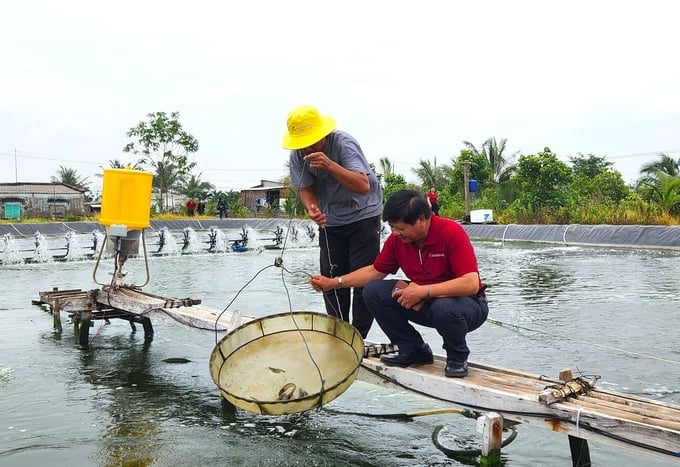Increasing demand in emerging markets, combined with stable supply from key farming regions, will help Vietnam sustain its export momentum in the coming period.
Vietnam’s shrimp export market has been continuously expanding, growing from 102 countries in 2023 to 107 countries in 2024, strengthening its increasing influence in global trade.
According to VASEP statistics, the top five export destinations for Vietnamese shrimp are China (including Hong Kong), the United States, Japan, the EU, and South Korea. Together, these regions account for 76% of Vietnam’s total shrimp export revenue.

Among major markets, China’s rise—reaching an export value of $843 million last year, up 39% from 2023—came as a surprise. In addition to traditional products such as black tiger shrimp and vannamei shrimp, Vietnam has also exported a significant volume of lobster to the world’s most populous nation.
Ocean Treasure, a major seafood and fruit import-export company in Europe, the U.S., and Latin America, reported that in January 2025 alone, lobster accounted for nearly half of Vietnam’s total seafood export revenue to China, an eightfold increase compared to the same period in 2024.
Thanks to this rapid expansion, China has now surpassed the U.S. to become Vietnam’s largest shrimp importer. Notably, this trend has continued into the early months of 2025.
Thanks to strong demand from China, the U.S., and the EU, shrimp exports achieved outstanding results, generating $542 million in the first two months of 2025, up 30.8% compared to the same period in 2024. In February alone, Vietnam exported $231 million worth of shrimp, a 34% increase year-over-year.
The Ministry of Agriculture and Environment forecasts that seafood import demand, including shrimp, will continue to rise until the end of 2025, especially as the global economy recovers and emerging markets such as the Middle East, Africa, and Southeast Asia expand their seafood consumption.
Specifically, in the U.S., trade policies under President Donald Trump’s administration could create new opportunities for Vietnam’s shrimp exports. Changes in consumer preferences, along with increased tariffs on Chinese-origin products, will give Vietnam a competitive advantage as the U.S. seeks alternative suppliers amid the ongoing global trade restructuring.
In the EU, by 2024, the import volume of vannamei shrimp and frozen shrimp reached approximately 370,000 tons, up 4% from 2023. Compared to 2019, the total shrimp imports into the EU have increased by 26%. Thanks to this overall market trend, Vietnam’s shrimp exports to the EU have rebounded, maintaining the country’s position as one of the region’s key suppliers.

Regarding the industry’s outlook for this year, VASEP remains optimistic. Since October 2024, shrimp import prices have risen across most key markets. With a relatively stable shrimp supply from major farming regions in the Mekong Delta, prices—both for purchasing and exports—are expected to remain high throughout 2025.
“This stability will further strengthen the confidence of both exporters and importers,” said Kim Thu, a VASEP expert. She also left open the possibility of reaching the record export value of $4.3 billion set in 2022, noting that the current optimistic statistics have yet to reflect the peak shrimp consumption season.
However, competition and the ability to maintain sustainability remain significant challenges for the shrimp industry. In addition to quality standards, major markets impose additional requirements.
For the EU, a highly demanding market, shrimp must meet strict traceability regulations. To export to Europe, businesses are required to implement the HACCP system to manage risks throughout the farming and processing stages. Additionally, certifications such as ASC or GlobalGAP are mandatory to demonstrate that shrimp are farmed sustainably and without harming the environment.
The EU also requires shrimp to have clear certification from farm to table to ensure they are not linked to illegal, unreported, and unregulated (IUU) fishing. Regarding chemical standards, the EU enforces strict maximum residue limits (MRLs), particularly for antibiotic residues. If a shipment exceeds the permitted levels, it will not only be rejected but the exporting company could also face a potential export ban.
In the U.S., the Food and Drug Administration (FDA) imposes stringent food safety regulations. Imported shrimp must undergo 100% inspection to detect banned antibiotic residues such as oxytetracycline and enrofloxacin. Additionally, shrimp exported to the U.S. must have mandatory certifications such as HACCP and Best Aquaculture Practices (BAP).
These standards require farmers not only to control product quality but also to ensure that farming and processing conditions are hygienic and environmentally friendly.
To achieve the shrimp export target of $4–4.3 billion in 2025, VASEP recommends that the government and relevant ministries prioritize economic diplomacy, engage in bilateral negotiations, and implement targeted trade promotion strategies.
Priority should be given to negotiations with South Korea under the Vietnam-Korea Free Trade Agreement (VKFTA) to eliminate quotas on Vietnam’s shrimp exports and reduce tariffs to 0%. This would further enhance trade prospects for the shrimp industry.
The issue of traceability was raised by the Directorate of Fisheries and Fisheries Surveillance following the 2024 brackish water shrimp season. Out of more than 700,000 hectares, nearly 350,000 farming facilities are required to register for identification codes, yet only about 20% have been issued codes so far.
Notably, in some provinces like Sóc Trăng, the registration rate is below 10%. Specifically, the province has over 41,000 farming facilities subject to registration, but as of the end of 2024, only about 3,800 had completed the process in compliance with regulations.
Bảo Thắng
